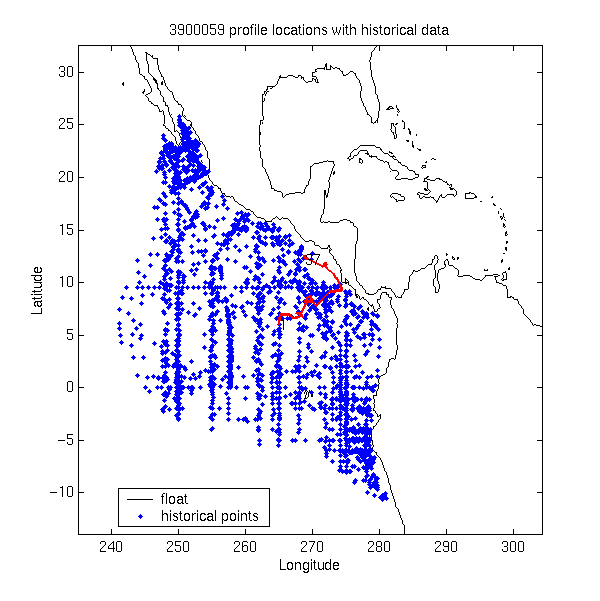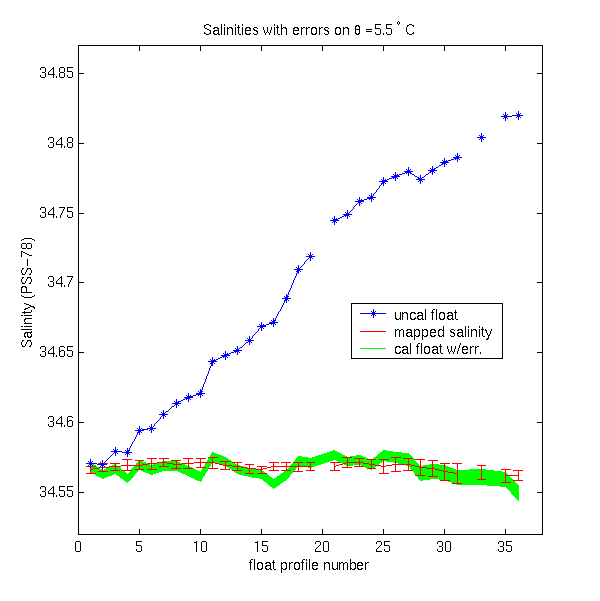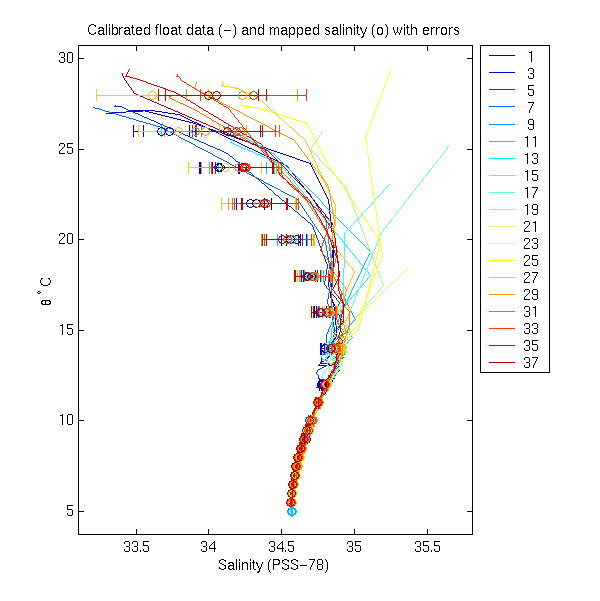Salinity Drift Adjustment Example
Float CTD sensors have improved markedly since the inception of Argo. Salinity sensor drift is detectable in only a small fraction of more recently deployed floats. However, some early designs showed a significant drift that requires adjustment during delayed-mode quality control. Argo float WMO 3900059 (a unique identifying number issued by the World Meteorological Organization) was such an early design that was deployed in the eastern tropical Pacific Ocean in late 2001 and reported 37 profiles. The marked conductivity sensor drift of this float prompts its use to illustrate application of adjustments recommended by a delayed-mode salinity adjustment system developed primarily by scientists working at PMEL in the figures that follow.

Figure 1. Argo float WMO 3900059 drift trajectory (red line) with nearby historical data (blue dots). Density and measurement scatter of historical data around each float profile locations determines the errors of the climatological salinity estimates there. These errors in turn determine the errors of any recommended adjustment.

Figure 2. Potential Temperature - Salinity (θ-S) curves from unadjusted profile data (solid lines) from float WMO 3900059 superimposed on climatological S estimates (o's) on θ surfaces with objective errors. Float profiles progress in color from blue to red (see line color chart). In this case increasingly higher salinity values relative to climatological estimates with time suggests significant sensor drift.

Figure 3. Unadjusted salinity on θ = 5.5 °C from float WMO 3900059 (blue line with * 's) drifts higher with increasing time, while mapped climatological values (red line with error bars) remain steady with low variability. Adjusted salinity values recommended by the delayed-mode salinity quality control system (green line with width indicating its uncertainty) are significantly different from unadjusted values in this case.

Figure 4. Potential Temperature - Salinity (θ-S) curves from adjusted profile data (solid lines) from float WMO 3900059 superimposed on climatological salinity estimates ('o') with objective errors. The drift toward saltier values with increasing time is now corrected. Details follow Figure 2.


